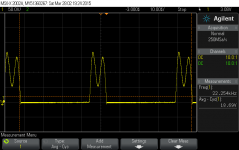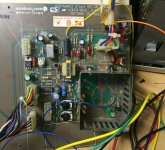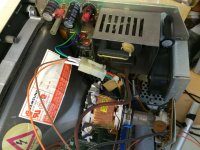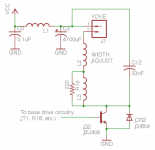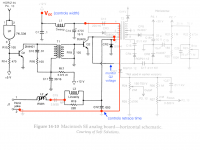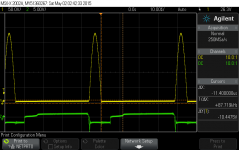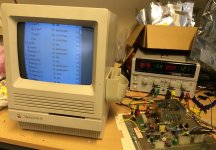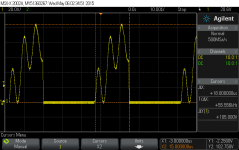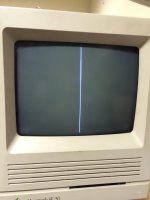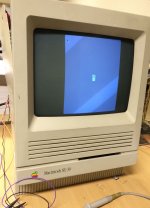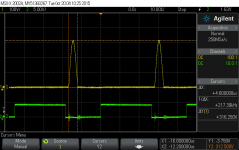apm
Well-known member
I'm revisiting one of the "classic" goals of compact Mac hacking: changing the resolution of the internal CRT screen. I've been poking at this for a few months, and I've finally got enough progress now that I'm reasonably confident it can be done, so I thought I would share where I've gotten to so far. I'm very interested in any ideas!
It'll take a few posts, so apologies in advance for possibly flooding this thread. Ultimately 640x480 is nice, but my eventual goal is to get up to two-page display resolution (1152x870) on the internal screen. That resolution could be the B&W CRT equivalent of the retina display. More on that later. To start with:
More on that later. To start with:
Why do this anyway?
1. Increasing the resolution means more useful screen real estate (if you can tolerate the smaller pixels).
2. Grayscale mods will be easier to come by if we don't need a card capable of 512x342 resolution.
3. VGA or better on the internal CRT means that other boards (68k/PPC Mac or otherwise) can go in the case without needing the guts of some other display wedged in.
4. Changing the horizontal scan rate means we can overclock the SE/30 and still use its internal display.
5. Because we can.
Now I know this is a recurring topic on 68kmla, and that there have been some previous efforts, e.g.:
https://68kmla.org/forums/index.php?/topic/5045-mac-classic-bw-grayscale-vga-mod/
https://68kmla.org/forums/index.php?/topic/11043-vga-on-compact-crt/
https://68kmla.org/forums/index.php?/topic/19351-raspberry-piclassic-crt/
The basic problem is that it's pretty hard to change the horizontal scan rate on the analog board. More on the approach in the next post...
It'll take a few posts, so apologies in advance for possibly flooding this thread. Ultimately 640x480 is nice, but my eventual goal is to get up to two-page display resolution (1152x870) on the internal screen. That resolution could be the B&W CRT equivalent of the retina display.
Why do this anyway?
1. Increasing the resolution means more useful screen real estate (if you can tolerate the smaller pixels).
2. Grayscale mods will be easier to come by if we don't need a card capable of 512x342 resolution.
3. VGA or better on the internal CRT means that other boards (68k/PPC Mac or otherwise) can go in the case without needing the guts of some other display wedged in.
4. Changing the horizontal scan rate means we can overclock the SE/30 and still use its internal display.
5. Because we can.
Now I know this is a recurring topic on 68kmla, and that there have been some previous efforts, e.g.:
https://68kmla.org/forums/index.php?/topic/5045-mac-classic-bw-grayscale-vga-mod/
https://68kmla.org/forums/index.php?/topic/11043-vga-on-compact-crt/
https://68kmla.org/forums/index.php?/topic/19351-raspberry-piclassic-crt/
The basic problem is that it's pretty hard to change the horizontal scan rate on the analog board. More on the approach in the next post...
Last edited by a moderator:

